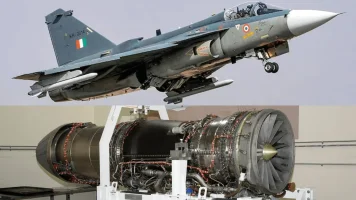- Views: 2K
- Replies: 15

The Indian Air Force (IAF) is exploring the possibility of replacing its aging fleet of An-32 transport aircraft with the recently inducted Airbus C-295M.
While the C-295M was originally procured to replace the Hawker Siddeley HS 748, its capabilities have prompted the IAF to consider it for the more demanding role currently filled by the An-32.
The An-32, a rugged Soviet-era workhorse, has been the backbone of the IAF's tactical airlift operations for decades, especially in challenging high-altitude environments like the Himalayas. Replacing it will require an aircraft with comparable performance in demanding conditions.
To assess the C-295M's suitability, the IAF will closely monitor its performance in high-altitude missions. The initial batch of six C-295Ms will be deployed in these environments, providing valuable data and operational feedback. Sources suggest that enhancing the aircraft's power output for optimal high-altitude performance is a key consideration.
The C-295M is currently powered by two Pratt & Whitney Canada PW127G turboprop engines. While these engines are adequate for standard transport roles, they may require upgrades or modifications to deliver the necessary thrust in high-altitude, low-oxygen conditions. One potential solution is to consider the PW150A engine, a more powerful variant from the same engine family, previously used in the AN-132 transport aircraft program.
Beyond engine upgrades, the IAF is also likely to evaluate potential airframe modifications to enhance the C-295M's high-altitude performance. This could involve reinforcing the landing gear, improving pressurization capabilities, or making aerodynamic adjustments to optimize the aircraft for sustained operations in extreme conditions.
The IAF's internal assessments will form the basis of an upgrade roadmap, which will be addressed in collaboration with Airbus and Pratt & Whitney. This collaborative approach will be crucial for successfully integrating any proposed engine or airframe modifications.
If the C-295M proves successful after upgrades, its selection as the An-32 replacement would streamline the IAF's tactical airlift fleet modernization efforts. This move could also serve as a model for India's indigenous manufacturing ambitions, as the majority of the C-295M fleet will be manufactured in India by Tata Advanced Systems Limited.


